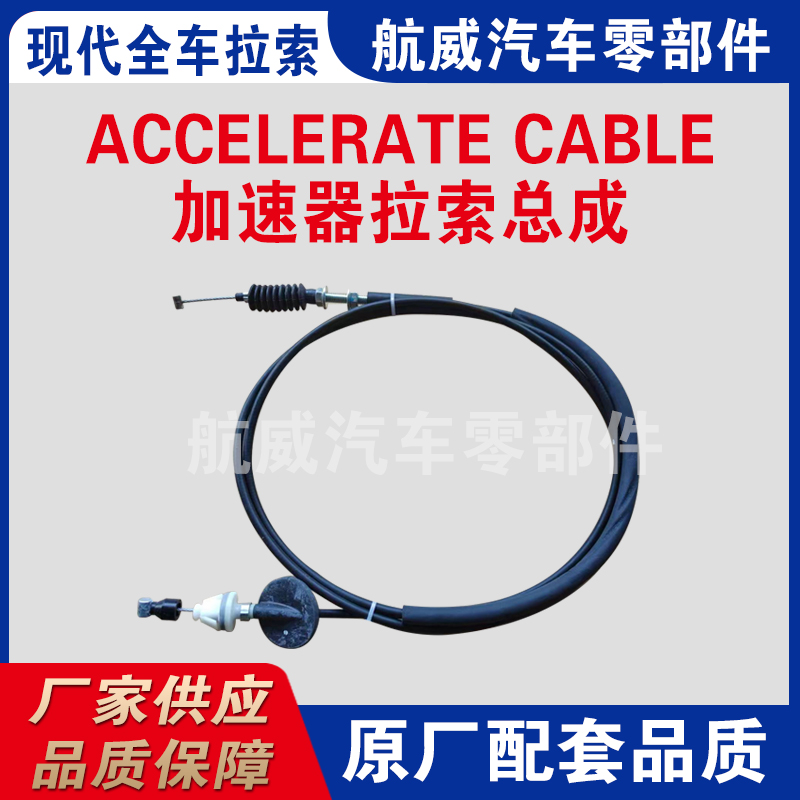Understanding Throttle Control and Cable Mechanisms in Automotive Systems
Understanding Throttle and Cable Systems in Vehicles
Throttle and cable systems play a crucial role in the operation of modern vehicles, ensuring that drivers maintain control over engine power and overall performance. The throttle controls the amount of air entering the engine, which in turn regulates fuel injection and power output. This delicate balance is essential for smooth operation, efficient fuel consumption, and optimal performance.
At the heart of this system is the throttle cable, a crucial component that connects the accelerator pedal to the throttle body. When a driver presses the accelerator pedal, the throttle cable pulls on the throttle plate, allowing more air to enter the engine. This increase in airflow signals the engine control unit (ECU) to inject more fuel, leading to a rise in engine RPM and a corresponding increase in speed.
Components of Throttle and Cable Systems
1. Throttle Body The throttle body is a critical component that houses the throttle plate. It controls airflow into the engine and can be mechanically linked to the accelerator pedal via a cable or electronically controlled through a drive-by-wire system.
2. Throttle Cable Typically made from durable materials, the throttle cable is designed to withstand tension and friction. Its function is to translate the motion of the accelerator pedal into a physical movement that adjusts the throttle plate.
3. Accelerator Pedal The pedal itself is the driver's interface with the throttle system. When the pedal is pressed, it serves as a lever that activates the throttle cable.
4. Return Spring This component ensures that the throttle plate returns to its closed position when the driver releases the accelerator pedal. It provides a fail-safe mechanism that is crucial for safety.
Evolution from Mechanical to Electronic Systems
throttle and cable

Traditionally, throttle systems were purely mechanical, relying on the physical linkage of cables to control engine airflow. However, with advancements in technology, many modern vehicles now utilize electronic throttle control (ETC) systems, commonly referred to as drive-by-wire systems. These systems eliminate the need for a physical cable, replacing it with electronic sensors and actuators.
In ETC systems, the accelerator pedal is equipped with sensors that send signals to the ECU. The ECU then determines the optimal throttle position based on various parameters, such as engine speed, load, and vehicle stability. This not only improves response times but also enhances safety and efficiency. For example, electronic throttle control can help prevent sudden acceleration in adverse conditions, such as slippery roads.
Advantages of Electronic Throttle Control
1. Improved Fuel Efficiency ETC systems can optimize fuel delivery more precisely than traditional cable systems, leading to enhanced fuel economy.
2. Better Throttle Response Electronic systems can react more quickly to driver input, allowing for smoother acceleration and deceleration.
3. Integration with Safety Features ETC can be integrated with various safety systems, such as stability control and adaptive cruise control, providing a more cohesive driving experience.
4. Reduced Emissions By optimizing the air-fuel mixture, electronic throttle control helps in reducing exhaust emissions, contributing to a cleaner environment.
Conclusion
Throttle and cable systems, while seemingly simple, play an integral role in the performance and safety of vehicles. As technology continues to evolve, the shift from mechanical throttle cables to electronic control systems represents a significant advancement in automotive design. With benefits ranging from improved throttle response to enhanced fuel efficiency, these innovations not only enhance driving enjoyment but also contribute to a more sustainable future in the automotive industry. Understanding the intricacies of these systems empowers drivers to appreciate the underlying technology that facilitates modern vehicle operation.
-
Upgrade Your Vehicle with High-Quality Handbrake CablesNewsNov.01,2024
-
Optimize Your Bike's Performance with Quality CablesNewsNov.01,2024
-
Enhance Your Vehicle's Performance with Quality Clutch ComponentsNewsNov.01,2024
-
Elevate Your Vehicle's Performance with Quality Throttle CablesNewsNov.01,2024
-
Elevate Your Vehicle's Performance with Quality CablesNewsNov.01,2024
-
Affordable Solutions for Your Cable NeedsNewsNov.01,2024
